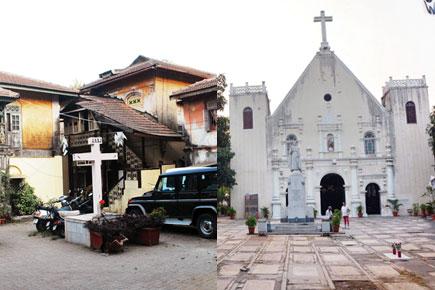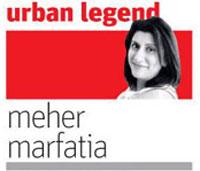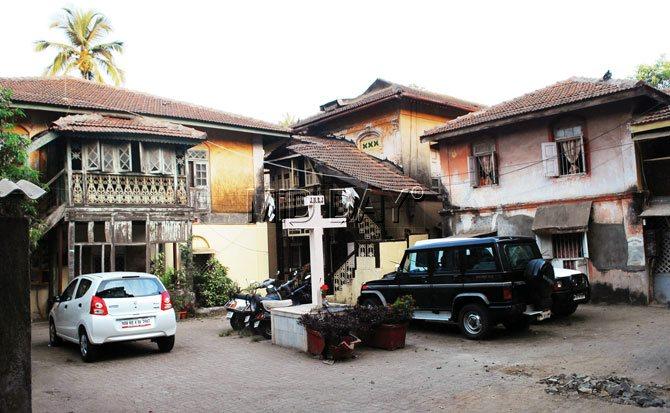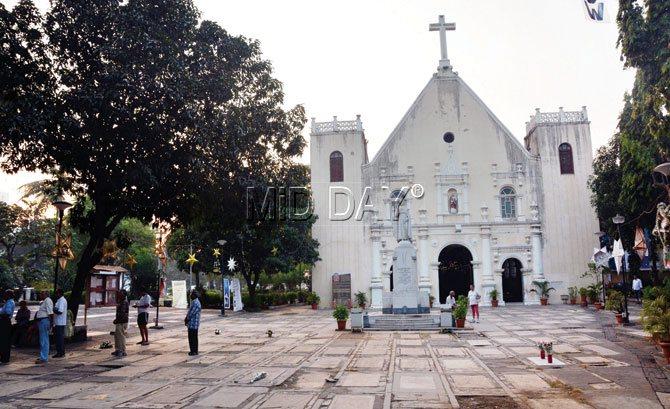You keep talking about South Bombay,” a friend complains. It shall be a year to share some legends of the North, I promise

A Plague Cross at Ranwar village, Bandra and St Andrewu00c3u0083u00c2u0083u00c3u0082u00c2u00a2u00c3u0083u00c2u0082u00c3u0082u00c2u0080u00c3u0083u00c2u0082u00c3u0082u00c2u0099s Church in Bandra just turned 200
 Loves Mumbai and adores Bombay
Loves Mumbai and adores Bombay
You keep talking about South Bombay,” a friend complains. It shall be a year to share some legends of the North, I promise. Writing this column on Epiphany Day (the sixth dawn in January when the three wise men went bearing gifts for the baby of Bethlehem) makes the Catholic bastion of Bandra an apt starting point.
“Once there were green fields kissed by the sun,” declared Fr Larry Pereira in the Bombay Local History Society magazine, Explorer. I’m happy to have been warmed by the same. Schooling in a convent keeps you in the know and flow of things Biblical. And thanks to a favourite aunt living on Boran Road’s two-storeyed Ascension House (alluding to the holy story of the Ascension) it was easy finding out that the pride of Boran village was the Heritage Wooden Cross of 1854 from the Almeida family.

A Plague Cross at Ranwar village, Bandra
Built to protect their hamlet from the plague, a marble base was added in the vintage treasure’s centenary year.
The Queen of Suburbs is strewn with these relics. On the shortest stroll you pass a purposefully placed Plague Cross. One reason why several such were erected was to ward off an outbreak of that then raging disease as well as to remember those succumbing to it. Back in the 1890s, sleepy Bandra villages saw a sudden population boom after a series of bubonic plague attacks struck Bombay. Not many advances in medical science to their rescue, people tried the next line of care: prevention. They simply sought to move away from the overcrowded island city. Secluded Bandra’s leafy lanes provided a safe haven.
Though crosses predate this period and have sprung up since, the late 1800s and early 1900s — Bombay’s years of “the black death” — proved Bandra’s golden days of cross construction. Often at a corner of public squares and occasionally on private property, lime-washed crosses still stand along the palm-treed stretch between Lilavati Hospital and Hill Road, clustered in and around historic Ranwar village.
Off the Hill Road end abutting the Arabian Sea, 200-year-old St Andrew’s Church has the oldest of about 150 original crosses in Bandra. First gracing St Anne seminary (which was destroyed in 1739), this 17-feet-high monolith is carved with 39 emblems of the Passion of Christ.
A slant across lies the entrance to Ranwar village. That this was rice grower paradise may be deduced from the patchwork quilt-like maze of tiny cottages. The precinct’s East Indian settlers raising paddy, among other crops, for their local needs and for export, inhabited roughly 25 hamlets called pakhadis. The majority of these residents were farmers; the rest became toddy tappers, potters and fishermen selling pomfrets for an anna each, which were dried or fried, flavourfully pickled or curried.

St Andrew’s Church in Bandra just turned 200
Dating back four centuries and possibly remodelled two centuries ago, the houses of Ranwar display double windows with diamond-patterned ventilators and cemented seat balconies which were a focal meeting point for gossipy neighbours waved welcomingly within. In that age of innocence, front doors were left wide open to the street day and night, expressly to usher the outside in.
Look hard today and you spot stray pockets of red-roofed Ranwar, Chimbai, Sherly Rajan, Pali and Chuim villages show traces of a vibrant heritage in 19th-century domestic architecture decidedly Portuguese in influence. Wooden staircases and jutting verandas have fallen prey to the greedy builder lobby, blunting the communicative quality of close communities.
Pipe-puffing, wizened uncles on verandas recall how kids chased clucking hens and fattened pigs across the village square. Due for sale at Christmas, Easter and the Bandra Fair in September, the animals were made to put on flesh for final succulence. So women tending the herd wanted starch in the diet and they were a quaintly familiar sight crisscrossing alleys balancing rice soup pails on their heads. Goats, turkeys and guinea fowls were reared and cookery recipes ranked as prized dowry items. Dessert always the high note, cucumber cake, rice atola, sweet potato chatch, ambrosial almond and cashew marzipan filled festive trays.
Sweets or savouries, cafés and bakeries across Bandra continue to offer delectable treats. My family haunt used to be Blue Circle, the small shop beside New Talkies — now Globus — where we got our weekend film fix every Sunday morning. Blue Circle’s buttery fresh wafers melted in the mouth, a delight second to none. With a hat tip to the times of its cultivator-farmer ancestors, beloved Bandra feasts forever.
Write in to Meher at: mehermarfatia@gmail.com
 Subscribe today by clicking the link and stay updated with the latest news!" Click here!
Subscribe today by clicking the link and stay updated with the latest news!" Click here!









